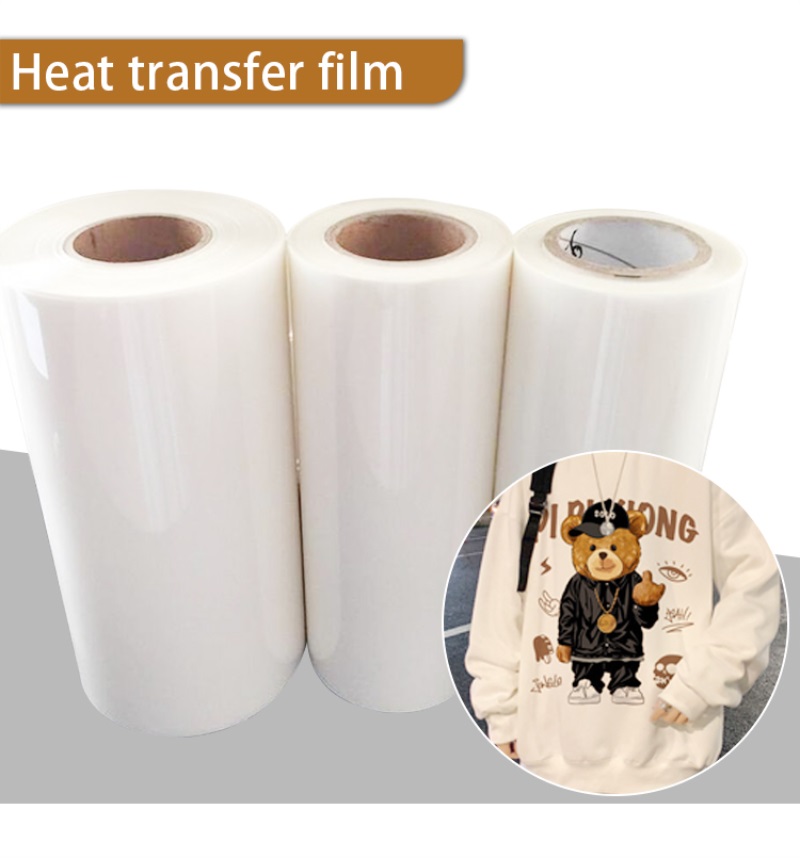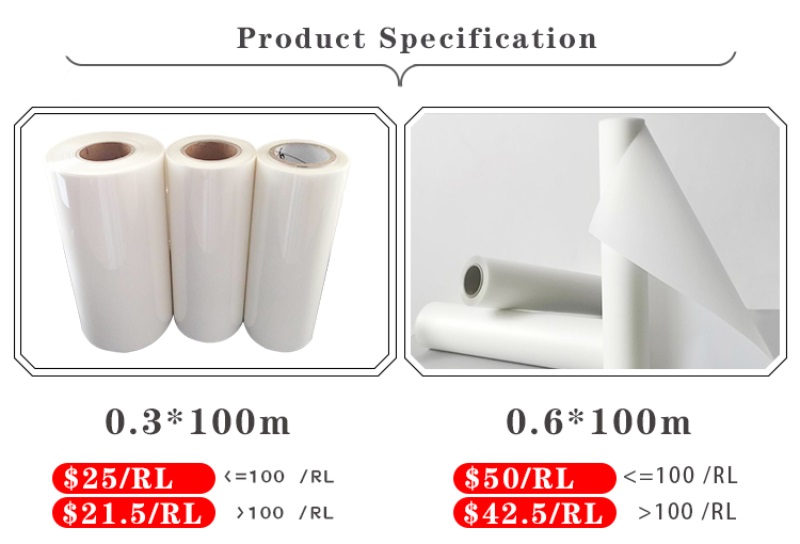Heat transfer film, also known as heat transfer vinyl or HTV, is a type of material used for creating designs, patterns, and graphics on fabrics through the application of heat and pressure. It is a popular choice in the garment and textile industry for adding customized and vibrant designs to various types of fabrics.
Heat transfer films are made of thin, flexible vinyl sheets that contain a heat-activated adhesive on one side. These films come in a wide range of colors, finishes, and effects such as matte, glossy, metallic, glitter, and even patterns like camouflage or animal prints. Some heat transfer films also have special properties like reflective or glow-in-the-dark capabilities.

The process of using heat transfer films involves the following steps:
1. Design Creation: The desired design or pattern is first created using design software or by cutting shapes and letters from the heat transfer film using a specialized Cutting Machine. The design can be simple or intricate, depending on the intended outcome.
2. Cutting and Weeding: The heat transfer film is usually placed on a cutting mat and fed into a cutting machine, which follows the designated design and cuts through the material, leaving the desired shapes. After cutting, excess vinyl (negative space) is carefully removed, a process known as weeding, leaving only the intended design on the backing sheet.
3. Application: The design, still attached to the backing sheet, is positioned on the fabric with the adhesive side facing down. Applying heat and pressure with a Heat press or an iron activates the adhesive, causing it to bond with the fabric. The heat press or iron should be set to the appropriate temperature and applied for a specific duration, as recommended by the manufacturer.
4. Peeling and Finishing: After the heat is applied, the design is allowed to cool down, and the backing sheet is peeled off, leaving the transferred design securely adhered to the fabric. Some heat transfer films require a "hot peel," where the backing sheet is removed immediately after heat application, while others require a "cold peel," where the backing sheet is removed once the design has cooled completely.
The resulting transferred designs are durable, long-lasting, and resistant to washing and wear when properly applied. They can withstand repeated washes and maintain their vibrant colors and overall quality.

Heat transfer films are widely used for personalizing apparel, including t-shirts, hoodies, caps, bags, and team uniforms. They offer the flexibility to create custom designs, names, logos, and graphics, making them popular in the world of fashion, sports, promotional products, and hobbyist crafts.
Overall, heat transfer films provide an accessible and efficient method for adding customizable designs to fabrics, allowing individuals and businesses to create unique and eye-catching garments and textiles.